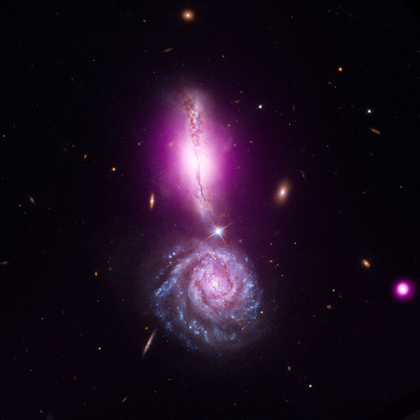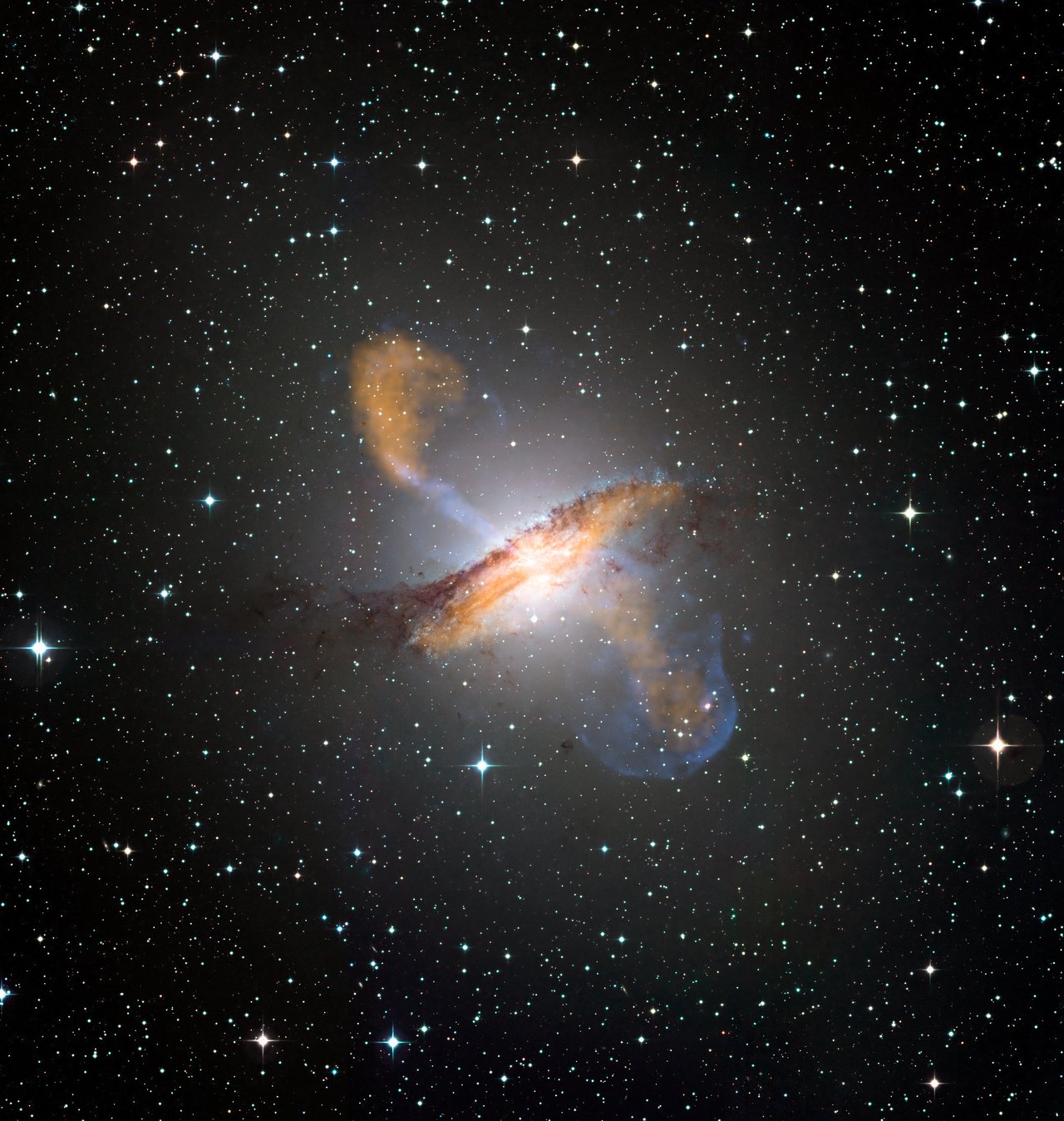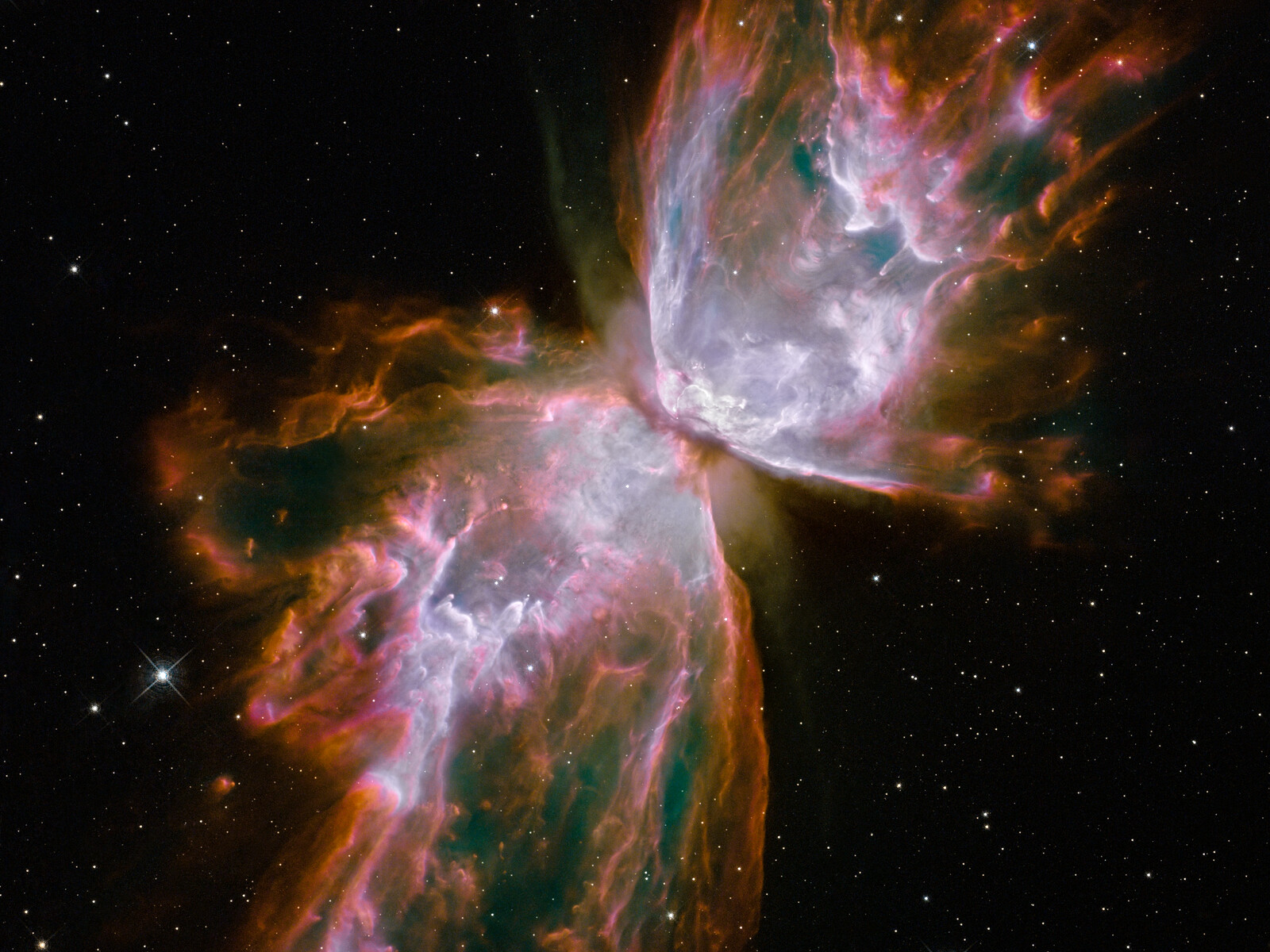Friday, 11 November 2011
Shakespeare got it!
O God, I could be bounded in a nutshell, and count myself a
king of infinite space
Friday, 7 October 2011
My Dissertation, Decisions Decisions! - X-ray Binaries
So I was trying to think of a reasonably exciting topic and hopefully something with some sort of relation to AGN. In my lab work this week we where talking about Binary systems (I've got to update some predictions of when there gonna eclipse) this got me thinking about X-ray Binaries. So I've had a little bit of look around for some paper and books -still in the process of reading them. They're pretty interesting and accretion powered just like AGN which is a win win.
Heres a bit of background on binary star systems their when 2 stars orbit a common centre of mass(around each other) in an X-ray binary system one of the stars is a compact object(neutron star or a black hole). As the compact object has a strong gravitational field is can sometimes take some of the matter from is 'companion' star this produces X-rays hence there name.
So here's what I know so far. X-ray binaries come in two types - when companion star is high or low mass. In the high mass case the companion is massive enough to resist the compact objects gravitational pull however due to its high mass it also burns much hotter and this drives off some matter(this is known as stellar wind), which is then collected by the compact object. These systems tend to undergo pulsations in X-ray observations and there companion star tends to dominate the optical emissions.
The second type is when the low mass companion star can not resist the pull of the compact object. In this situation the matter of the companion closest to the compact object pulled towards it more than the matter on the other side. This creates a distortion and allows some of the matter to pass point at which the companion can pull it back -this is called a Lagrangian point. Once passed the Lagrangian point the matter heads straight for the compact object- This is called Roche-lobe overflow. It can't fall directly in as angular momentum must be conserved so the matter forms a disk around the compact object-this is also true for the former case.
Once in the accretion disk the material loses angular momentum as it does this it gets closer to the compact object before in the inner regions it falls into it. It is from the inner regions of the which the X-rays are emitted.
The energy gained in accretion is gravitational potential energy. Its really just a fancy way of saying the energy given to matter when its pulled on by other matter and as gravity gets stronger the closer the masses. The more massive the object pulling the matter in and the closer the matter gets to the object the more energy is released. So as the compact objects are very very massive the matter falling into them gains a huge amount of energy.
Thats no all I've learned but its getting pretty late and this post has gotten quite long so I'll leave it here for now.
Wednesday, 7 September 2011
Close to 1
Now it might sound like the student was being very silly but thinking back at it there are an infinite number of values between 1 and 2 but you could say that about any value. I just thought it was interesting to think about the scales of numbers and how to say some value is close to another depends heavily on the context.
Sunday, 4 September 2011
Definition of a Planet
- Obit around a Star
- Be sufficiently large that it's self gravity can overcome rigid body forces (it's nearly round).
- Have cleared the area around it's orbit from debris
It is the last bullet point that means Pluto is not a planet.
Source
Monday, 15 August 2011
Galactic Punctuation and Collisions
VV340 (also known as Arp 340 or UGC 9618) is a pair of interacting gas rich spiral galaxies in the Bootes constellation. Located ~450 million light years from Earth.
It is classified as Luminous Infrared Galaxy (LIRG). LIRGs produce high amounts of IR radiation and can emit from tens to hundreds times more energy than typical galaxies. Actively growing supermassive black holes (AGN) or an intense period of star formation are normally attributed to be the cause of this energy production.
Spitzer data shows that the majority of the IR emissions is coming from the edge on galaxy (VV340 North), and coupled with data from Chandra there is strong evidence for a growing supermassive black hole (SMBH) at its centre obscured by the rest of the galaxy - however only a small proportion of the IR radiation is emitted from SMBH region. However in the UV and short wavelength optical emissions from GALEX and Hubble observations, show that VV340 South to be the brighter suggesting that it has a much higher level of star formation.
Colliding galaxies like this are a premonition of our own Milkyway's future. As we are predicted to be on a collision course with Andromeda. But before anyone starts preaching the apocalypse it's not going to happen for another 3 to 5 billion years. So where safe! Galactic cannibalism is not rare! In fact there are 2 BHs in Andromeda's nucleus. The second BH may well be from a galactic collision.
Thursday, 11 August 2011
Juno
The main objectives of Juno are to peer into Jupiter's interior to determine how it formed and to map its atmosphere below the clouds to determine its global structure and motion. Also to be probed is Jupiter's magnetosphere by directly sampling charged particles and measuring the magnetic field while observing the auroras in the UV-region. It is suspected that in the inner atmosphere the hydrogen it contains is under such high pressure it becomes a fluid known as metallic hydrogen which is thought to be the source of Jupiter's magnetic field hopefully Juno will shed some light on this.
The name for Juno is very apt as in Greek-Roman mythology Jupiter drew a vail of clouds around him self to hide his mischief and it was Jupiter's wife Juno who peered though the clouds and exposed Jupiter. Hopefully the spacecraft will live up to it's name.
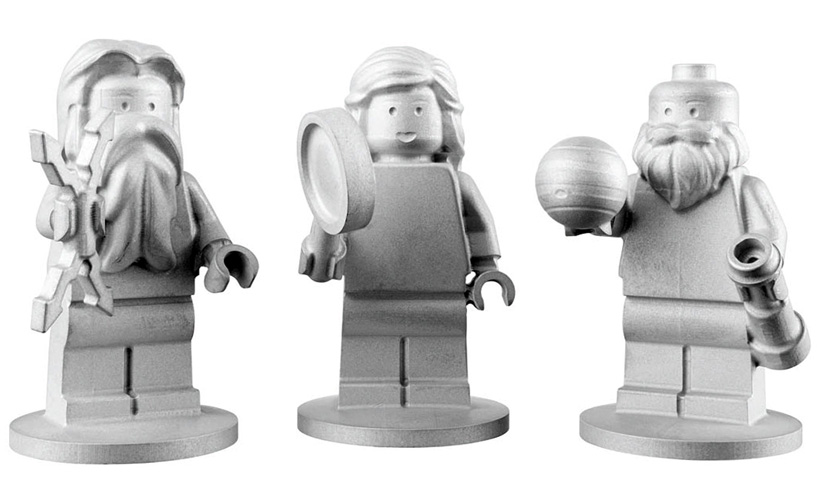 Lego figures of (From left to right) the gods Jupiter and Juno as well as astronomer Galileo Galilei made of aluminium have been sent along for the ride.
Lego figures of (From left to right) the gods Jupiter and Juno as well as astronomer Galileo Galilei made of aluminium have been sent along for the ride. Saturday, 23 July 2011
Maths/Physics tattoo
Economical Numbers

Wednesday, 20 July 2011
Determining a central mass from observations of its satellites
Kepler's Third Law states

The plan of the experiment is to fill in each of the variables(Period P and Radius a).
First things first is you need to acquire images of the thing you wish to determine the mass of, about 10 spaced over an adequate timescale (would depend on system observed). In the case of the experiment Ben and I conducted we had 7 images of Uranus over a period of 240 days.
Next Use a program that allows you to "blink" between images (we used SAOImage) and Find the bodies which are moving in the images. This can be quite difficult as the central body is most likely moving also relative to the background, this is why it is good to have a couple of images closer together. As there will be only a small change in the background-the moon should change position in a much smaller period. Once the satellites have been identified mark their positions on each image.
Then using the imaging program find the (central) x,y co-ordinates for each body and the central mass in each image. The relative positions of the satellites from the central body. Using these values its just a case of using the Pythagorean theorem (a^2 + b^2 = c^2) to calculate the radius of the orbit in pixels. Convert the radius into Kilometers.
Going back to the relative positions and using an ATAN2 function to convert the x,y co-ordinates into a relative angle to the central mass. Then using n Pi (where n is an integer value) to adjust so an angle against time is a straight line graph - this is needed due to definition of the ATAN2 function . The gradient of such a graph is the angular frequency ω of orbit. From the angular frequency ω we can find the period P of the orbit using the relation below.

Once the period is known it is just a case of rearranging Kepler's third law for Mass M and you have the mass of the central body
New Radio Space Telescope in Orbit


Tuesday, 19 July 2011
The Hubble Space Telescope and Beyond

Hubble Space Telescope in Orbit
The HST has certainly played a major role in the world of astronomy and physics, with achievements in many different areas of these subjects. Successful missions include researching black holes at the centre of galaxies, observing the formation of planets around new stars, estimating the age of the Universe, detecting the first organic molecule in the atmosphere of a Jupiter-sized exo-planet and providing evidence for the existence of dark energy. I thought I would write a little more about the age of the Universe since this is an area of particular interest to me.
In the early 20th century, Edwin Hubble discovered the expansion of the Universe and also a relationship between the distance d of an object and the velocity v in which it is receding; v=H0d, where H0 is the Hubble Constant. A value for this Hubble Constant can therefore be determined by accurately measuring the velocity and distance of an object such as a galaxy; the Hubble Constant is simply related to the age (Age=1/H0).
The recessional velocity could be accurately measured using the red-shift of the light that it emits (the Doppler Effect on a cosmological scale), however the distance proved a little trickier to find. Certain stars, called Cephieds, pulsate and this pulsation is related to the absolute magnitude of the star which can be used to find the distance. The inaccuracy occurred due to ground-based telescopes not being able to “see” faint enough. Using the ground-based telescopes the age of the Universe was estimated at 7-20 billion years old. There is a lot of uncertainty in these results!
With the launch of HST, the Cepheids could now be observed much more accurately, free from atmospheric effects and light pollution. With this data the Hubble Constant was found to be 71 km s-1 Mpc-1 with a 10% uncertainty1, which corresponds to an age of 9 to 14 billion years, which is much more accurate than previous results. With the use of other experiments this was pin-pointed to 13.7 billion years1.
The HST has also played another important role, and that is in bringing the world of science to the general public, and seeing images from the HST is partly what first sparked my interest in science. I saw beautiful images of galaxies and nebulae and formations of interstellar gas and dust, such as the Pillars of Creation, and I immediately wanted to know what they were, where they came from and how they fit into the grander scale of the Universe.

Pillars of Creation- Image by HST
With the construction of the James Webb Space Telescope, things can only get better. The JWST will see further into the infra-red and hence will see further than Hubble (light from further objects is more red-shifted). The JWST also boasts a larger mirror, allowing it to collect more light and peer ever deeper into space. One disadvantage that I can see to JWST is that its orbit will be much further away from the Earth, it is in fact not going to orbit the earth at all, but the Sun! It orbits the Sun at the same rate as the Earth and so is stationary relative to us on Earth. Due to the immense distance astronauts will not be able repair or modify the JWST, as was possible with Hubble. The future however looks bright.

The orbits of HST and JWST
For more information on Hubble visit, www.nasa.gov/hubble
For more information on JWST visit, www.jwst.nasa.gov
1-Images and values from nasa.gov
Monday, 18 July 2011
What makes a good teacher/lecturer?
This is something I've often wondered about being in my 13th or so year in education I've had fair few of them. Some I have thoroughly enjoyed being thought by, some I've not so much enjoyed but the where good none the less. However some have been appalling. Teaching isn't just knowing the subject! It's about bringing it to life, or at least showing how it relates to it so I can see how it's useful to know.
For instance in high school I HATED maths now I'm going out of my way to learn it! I guess it just depends on the teacher.
I'm not sure about that comment though because I've had teachers that have been fantastic teaching one subject then teaching another was woeful. So is it having the right teacher for the right subject? Or is it that I didn't like the subject so was unwilling to learn?
Anyway back to the main point. Does a teacher have to enjoy the subject there teaching? I've noticed that when a teacher is teaching subjects closer to there interests they are much better! Having said that though I've had fantastic teachers when teaching something so far away from there subject of interest as to be in a completely different universe.
Let me know what you guys think makes a good teacher/lecturer!
Sunday, 17 July 2011
Thursday, 14 July 2011
Getting to mars
This got me thinking what are the problems facing a mission to Mars?
How long is a journey to mars? After some searching I found the value of 9 months just to get there, oh and the opportunity only comes around every 26 months! (source)
My next point of inquiry how long are astronauts on the ISS ? I found that it is about 6 months which is only a third of the time it takes just to get there and back!
So what are the heath risks of being in space? for this NASA where quite help full (source 1 ,source 2 )
Some of the most well known risks are muscle atrophy and spaceflight osteopenia (or bone-loss to you and me) these are both coursed by the micro-gravity in space! So we could use artificial gravity be a solution? Yes and it's easy enough to mimic gravity, use a centrifuge! However NASA says it's to expensive/complex to spin the entire space craft and suggest a bike in a loop- it would be a human powered centrifuge. This would also mean that the astronauts would be exercising too which is reported to help with these problems.

However in the experienced force would not be distributed evenly through the body which could make for interesting results.
Then there is the very serous problem of radiation! The main counter measure at the moment is limiting the time exposed not really much use for the trip to mars. Also inboard the ISS two thirds of the radiation is blocked by body of earth and it's magnetic field. In the Apollo missions the astronauts received three times the dose of astronauts on the ISS. But baring some devloping cataracts they where healthy. However for much longer trip to mars the radiation exposure is going to be much higher!
So what can be done about the radiation? according the NASA source above Hydrogen is the best element at absorbing high energy radiation! Hydrogen being a gas isn't much use as shield by it's self now is it! So finding a compound with high hydrogen content is the key to a good shield. Well my minor subject at uni is chemistry and I can tell you, as does the source, plastics such as polythene are very high in Hydrogen.
Problem sorted? Not quite as the structure of any spacecraft has to be strong and light, as well as providing adequate radiation shielding. At Marshall Space Flight Center they have developed a reinforced polyethylene that is 10 times stronger than the aluminum used in spacecraft today and it's lighter! Now all that needs to be done it to make it cheaply enough.
So it looks like NASA are well on there way to mars. However there still a lot more research to be done on the effects of micro-gravity and the radiation on the body, along with many other advisement that I haven't covered (you'd be here all day if I did) before any manned missions to mars can happen. I just hope that the US government give NASA the resources they need to meet there proposed target of today's children getting to mars and I hope I'm alive to see it!
Wednesday, 13 July 2011
Tuesday, 12 July 2011
Neptune fact file on it's first birthday
Mass : 1.0243×10^26 kg
Orbital Period : 164.79 years
Discovered: 164.79 years ago (December 28, 1612) by Urbain Le Verrier bit of argument there though John Couch Adams claimed to have found it also!
Day: 15 hours, 57 minutes and 59 seconds (source)
Atmospheric components: 74% hydrogen, 25% helium, 1% methane
Number of moons: 13
Number of rings: 6
Looks like:

Monday, 11 July 2011
The people that inspire me to do physics Continued!
Neil deGrasse Tyson, I have seen him in documentaries, on youtube and I follow him on twitter. He has a great passion for astrophysics that you can't help to be caught up in.

The next guy is Carl Sagan! How can you not be inspired by him? I remember when a friend first showed me the pale blue dot video on youtube, it blew my mind!

Sunday, 10 July 2011
How much would you pay for the universe?
Friday, 8 July 2011
Sleeplessness and sticky notes
I thought it seemed reasonable enough. However when I get rid of one thought another one happily bounds in to replace it. So I end up with a load of sticky notes all over my wall and I still cant sleep!
Not only that, I shouldn't have got cheap ones they kept falling off my wall on to my head, or just generally making a noise which isn't something you want when your trying to sleep. Not only that my mind wont let me just forget about the idea after I've just written down, it wants to expand on it. Ironically this post is one of these ideas. So I was kept awake by thinking about how I'm going to write about being kept awake by the things that are supposed to be helping me to get to sleep.
Monday, 4 July 2011
Wednesday, 29 June 2011
Unity
Most people around me got 23 or 24, so we asked the helper what the value should be? He replied about 23.5, to which one of my friends sounding quite annoyed with him self I didn't think of using a fractional number, to be far to him we where all thinking it.
It seems silly thinking about it now there where no reason not to use them but for some reason we all unconsciously enforced unity on our values. Yo might just think it's use but the quark model was held back for some time because people believed that charges only came in unit values(1,2 or 3) - or so Murray Gell-Mann says so.
It seems strange to me that we force ourselves to think that unity so some how more beautiful than fractions when they are completely arbitrary the fractional charges on quark is only because it was long ago that the charge on an electron and proton was declared as the elementary charge - and therefore 1.
Just thought it was interesting to think about...
Tuesday, 28 June 2011
Grammar Nazis
Stephen Fry Kinetic Typography - Language from Matthew Rogers on Vimeo.
I found this via the bad astronomy blog it's one I often visit people should check it out!
Monday, 27 June 2011
What if?
With only 5 places at the Uni and competition from sources outside the uni. It's not looking to good for me. So I'm going to apply to other Uni's too but what if I don't get a place anywhere. Well I guess that means I've gotta go out into the real world and find a job. But like I said before I don't know what I want to do short of astro/physics research.
I'm sure jobs at an observatory would be just as hard if not harder to find than a postgrad place, so that's a dead end. On to my next idea, teaching? I don't think I'd want to teach not below a university level. Just because at uni the person wants to be there (well in most cases) and the stuff is generally more interesting, generally.
So that means I'm most likely going to have to venture out in to the big wide world, do some job that is monotonous that I would hate or I could follow the lead of Garrett Lisi, abandon technology and go live on an island in a vw caravanette, if only. I don't think I'm quite cut out for that unfortunately, as cool as that life style sounds.
Check this out! a new hero of mine!
Check it out!
Wednesday, 22 June 2011
Monday, 20 June 2011
The magic of science!
I don't see it that way, for me it's knowing how something works that excites me. The magic is that something (sometimes very complex) can be explained so simply. Take the solar system for example thinking all of this formed some how by magic, then think this all formed because "stuff" attracts other "stuff", with that simple statement (with a little bit of quantifying such as the inverse squared law and starting materials) the solar system appears from just that. Huge gas giant and bits off rock hurtling around a big ball of hydrogen all because "stuff" attracts other "stuff", now that's magic.
Saturday, 18 June 2011
Time traveller at CERN
Thursday, 16 June 2011
Science abuse.
Now I may be arguing semantics here but it's the wording of the phrase "Everything you are about to hear is true", NOT may well be true, is likely to be true, or more accurately is our best guess, but "is true" that just grates with me.
The theory is a very popular one in but despite how popular a believe is that doesn't make it true. The belief in a God is huge! Does that mean that god exists? I know that theories have to be mathematically rigorousness so its not quite the same thing but still. I'm not saying believing in an unproven theory is wrong either, I'm just saying if i ran around saying that a crime was committed some where along the line someone's is gonna want some proof! And in a show going out the public saying that a theory with no proof is true just seems wrong to me.
Let me know what you guys think.
Tuesday, 14 June 2011
The people that inspired me to do physics!

I remember on night half asleep going downstairs to get a drink/some food and I put the TV. Just for background noise (as I still often do!) anyway it turned out that NOVA:The elegant universe happened to be on -a program based on the book with the same title by Brian Greene. Hosted by the man himself, but there where also many other physicists on show, I later brought the book. Before I realized I had watched the whole show, it explained everything so beautifully. It was defiantly that show that first sparked my interest in physics. So i'd have to say that Brian Greene is one of the people that inspired me.

Another person has to be Michio Kaku. On the way back from a holiday I had some money left over and I wanted something to read on the trip back home. I happened across Parallel Worlds at first I didn't really like it. So it lay on my bookshelf for a couple of years. Then over one summer, bored I picked it back up and started to read and was absorbed into a tale of time travel, black holes and warp drives.
 That's all for now thanks for reading.
That's all for now thanks for reading.
It's pretty picture time again!

Image copied without permission from The Hubble Heritage Website - Check it out there are some really good pictures on the site. (Click image to see the original url)
Heres some interesting stories of scientific
Scientists suggest spacetime has no time dimension?
That's an interesting idea.
Researchers create self-strengthening nanocomposite
Pretty cool material, will be interesting to see how it can be used.
Beams of electrons link Saturn with its moon Enceladus
I found it interesting hope you guys do to.
Nearby galaxy boasts two monster black holes, both active
I'm quite interested in AGN, One of the projects I'm looking at joining for my PhD is using X-rays to determine the properties of the black holes at there centre.
A big surprise from the edge of the solar system: magnetic bubbles
Its always interesting when a probe/experiment comes back with something completely unexpected.
Friday, 10 June 2011
Usefull websites
Well the first one is Obvious it's Wolfram Alpha

This site does everything but tuck you in and sing you to sleep. Whether is graphing a function you just cant visualize, doing derivative and showing you the steps or just telling you how much fat was in that MacDonald's cheese burger you just ate. Wolfram Alpha is a myriad of useful and useless information. There are a couple of time I've had to substitute for a fraction(putting a instead of b/2 or something) in an equation. However saying that it is very rare. Try not to rely on it to much though. I find it most useful when I'm stuck on a tricky integral or derivative as the show steps button can show you how to start off.
The second one is one that I think is very good it's Hyper-Physics
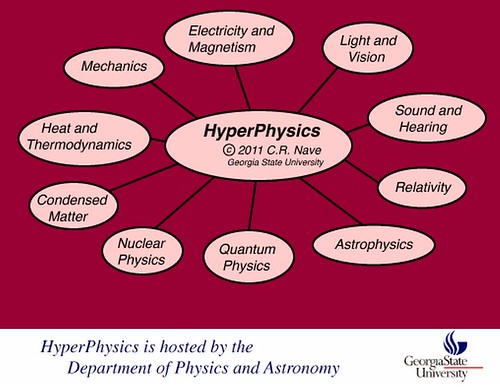
This website is really useful it covers pretty much everything, easily navigated and everything well explained.
The next one is a useful web page from the Center of Astrophysics from Harvard University
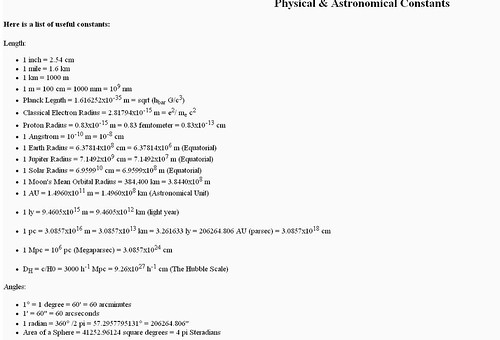
Its always good to have a webpage full of constants and having it from creditable source is even better.
The last one for now is Blue solver. I haven't used this one but I found it one day though it seem'd pretty good so let me know what you think.

Blue solver lets you select and equation then input values of the variables. It will then solve for the final one.
Thursday, 9 June 2011
My First Post


